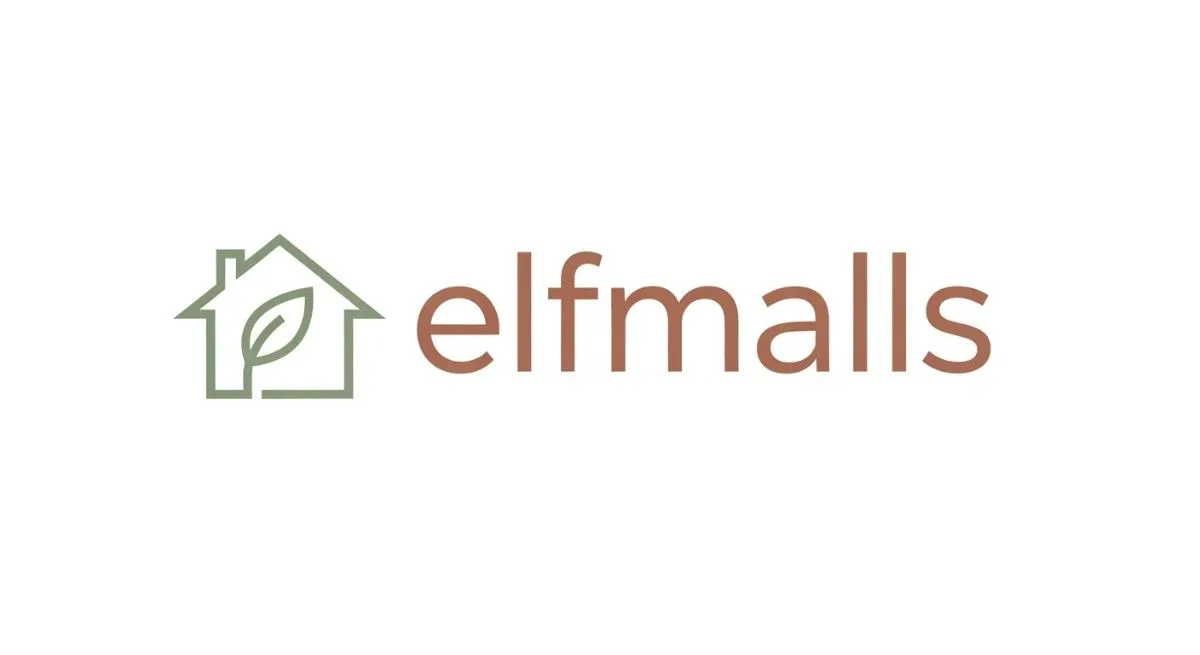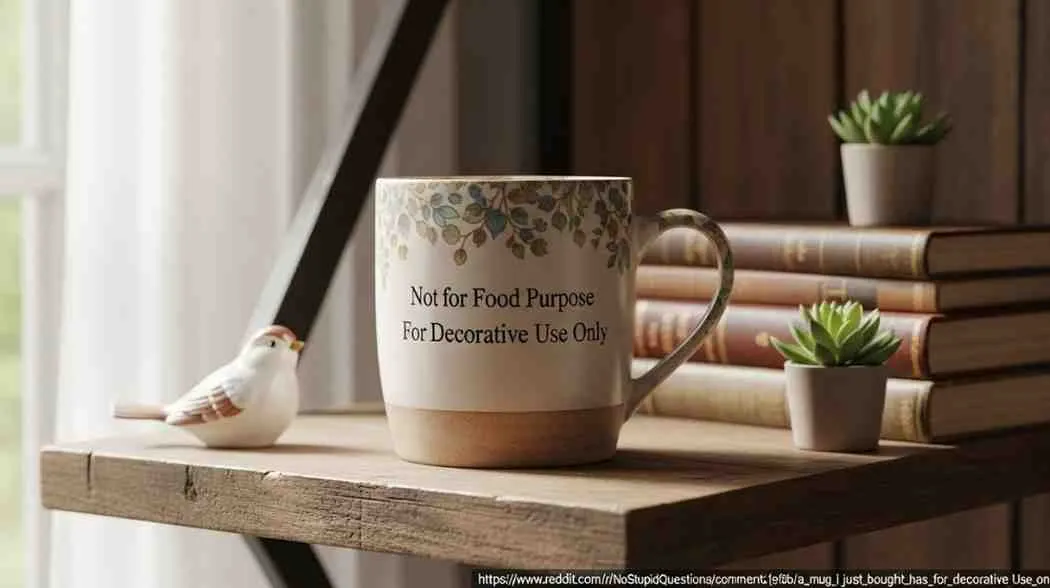Introduction: Understanding the Warning That Could Protect Your Health
You’ve just unwrapped a beautiful ceramic mug featuring your favorite character, inspirational quote, or stunning artwork. It looks perfect for your morning coffee—until you notice a small label or stamp on the bottom reading “Not for Food Purpose For Decorative Use Only” or simply “Decorative Use Only.” Should you be concerned? Can you still use it for beverages? Why does this warning even exist?
These questions are more important than you might think. The distinction between decorative ceramic items and food-safe products isn’t just legal semantics—it’s a crucial safety issue that can affect your health and the health of your family. Each year, consumers unknowingly expose themselves to toxic substances by using decorative-only ceramics for food and beverages, unaware of the potential dangers lurking beneath beautiful glazes and vibrant colors.
The phrase “not for food purpose for decorative use only” serves as a critical warning indicating that an item hasn’t met food safety standards and may contain harmful substances like lead, cadmium, or other toxic materials that can leach into your food or drinks. Understanding what this label means, why it exists, and how to identify food-safe alternatives is essential knowledge for anyone who purchases ceramic dishes, mugs, bowls, or other kitchenware.
This comprehensive guide will explain everything you need to know about decorative-only ceramics, including the health hazards they pose, how to distinguish them from food-safe items, what regulations govern ceramic safety, real-world cases of contamination, and practical tips for protecting yourself and your loved ones. By the end of this article, you’ll be equipped to make informed decisions about which ceramic items belong in your kitchen and which should remain purely decorative.
What Does “Not for Food Purpose For Decorative Use Only” Actually Mean?
When you see the decorative use only label on ceramic items, it’s a manufacturer’s explicit statement that the product has not been tested or certified as safe for contact with food or beverages. This designation indicates several critical facts about the item.

The Legal and Safety Implications
Untested for Food Safety: Items labeled as decorative only have not undergone testing to verify they meet food safety standards established by regulatory agencies like the U.S. Food and Drug Administration (FDA) or European Union safety requirements. The manufacturer makes no claims or guarantees about the safety of consuming food or drinks that have contacted the item.
Potential Toxic Substances: The glazes, paints, or finishes on decorative ceramics may contain levels of lead, cadmium, or other heavy metals that exceed safe limits for food contact surfaces. These substances can leach into acidic beverages like coffee, tea, juice, or wine, potentially causing health problems with repeated exposure.
Manufacturing Standards: Decorative items may be produced using manufacturing processes, materials, or firing temperatures that differ from food-safe ceramics. The decorative use only label often indicates production methods prioritizing appearance over safety.
Liability Protection: From a legal standpoint, this labeling protects manufacturers from liability if consumers experience health issues from using the items for food purposes. It’s a clear disclaimer that the product wasn’t designed or intended for such use.
Why Manufacturers Create Decorative-Only Items
You might wonder why manufacturers produce items that look like mugs, plates, or bowls but aren’t safe for food use. Several reasons explain this practice:
Cost Reduction: Food-safe glazes and materials often cost more than decorative alternatives. Using non-food-safe materials allows manufacturers to offer lower-priced products while achieving vibrant colors and special effects difficult to achieve with food-safe alternatives.
Aesthetic Options: Some decorative techniques, finishes, and colors simply cannot be achieved with food-safe materials. Certain metallic effects, ultra-bright colors, and specialty finishes require materials that aren’t approved for food contact.
Import Regulations: Many decorative ceramic items come from countries with different safety standards. Rather than reformulating products to meet food safety requirements in every market, manufacturers label them as decorative only.
Niche Market: Some consumers specifically seek decorative display pieces that aren’t intended for practical use. Collectible character mugs, commemorative plates, and artistic ceramics serve purely aesthetic purposes for many buyers.
The Hidden Health Hazards of Decorative Ceramics
Understanding why these items carry warnings requires knowledge of the specific health hazards associated with non-food-safe ceramics.
Lead Contamination: The Primary Concern
Lead represents the most serious and common hazard in decorative ceramics. This toxic heavy metal has been used in ceramic glazes for centuries because it creates brilliant colors, smooth finishes, and durability. However, lead exposure poses severe health risks, particularly for vulnerable populations.
How Lead Enters Ceramics: Lead may be present in:
- Colored glazes, especially bright reds, oranges, and yellows
- Decorative overglaze designs and metallic accents
- Low-fired or improperly fired glazes that haven’t fully bonded
- Repairs or touch-ups using lead-based materials
Lead Leaching Process: When acidic foods or beverages contact lead-containing glazes, chemical reactions cause lead to leach from the ceramic surface into the liquid or food. Hot liquids accelerate this process, making that decorative coffee mug particularly dangerous. Repeated use increases exposure as leaching continues each time the item is used.
Health Effects of Lead Exposure: Lead is a neurotoxin with no safe exposure level, meaning any amount can potentially cause harm. Health effects include:
- Children: Developmental delays, learning difficulties, reduced IQ, behavioral problems, slowed growth, hearing problems, and anemia
- Adults: High blood pressure, joint and muscle pain, memory and concentration problems, reproductive issues, and kidney damage
- Pregnant Women: Lead crosses the placental barrier, potentially harming fetal brain development and causing premature birth or miscarriage
The insidious nature of lead poisoning is that symptoms often appear gradually, and damage may be permanent, especially in developing children.
Cadmium: Another Toxic Heavy Metal
While lead receives more attention, cadmium presents equally serious concerns in decorative ceramics. This heavy metal creates brilliant yellow, orange, and red colors in glazes and is sometimes used as a lead substitute.
Sources of Cadmium in Ceramics:
- Brightly colored glazes, particularly reds, oranges, and yellows
- Imported ceramics from regions with less stringent regulations
- Vintage and antique ceramics produced before cadmium restrictions
Health Risks: Cadmium accumulates in the body over time, particularly in kidneys and liver. Long-term exposure can cause:
- Kidney disease and kidney failure
- Bone softening and fragility
- Lung damage if dust particles are inhaled
- Increased cancer risk
- Reproductive and developmental problems
Like lead, cadmium can leach from ceramic glazes into acidic foods and hot beverages, creating ongoing exposure with each use.
Other Toxic Substances in Decorative Ceramics
Beyond lead and cadmium, decorative ceramics may contain other concerning substances:
Manganese: Used to create brown and black colors, excessive manganese exposure may affect neurological function.
Barium: Present in some glazes, barium compounds can cause muscle weakness, heart rhythm problems, and gastrointestinal issues if ingested in sufficient quantities.
Antimony: Used in certain yellow and white glazes, antimony exposure can cause nausea, vomiting, and diarrhea.
Poorly Bonded Glazes: Even when glazes don’t contain toxic heavy metals, improper firing or low-quality manufacturing can result in glazes that chip, flake, or deteriorate, potentially releasing particles into food.
How to Identify Food-Safe Versus Decorative-Only Ceramics
Protecting yourself requires knowing how to distinguish safe ceramics from potentially hazardous decorative items.
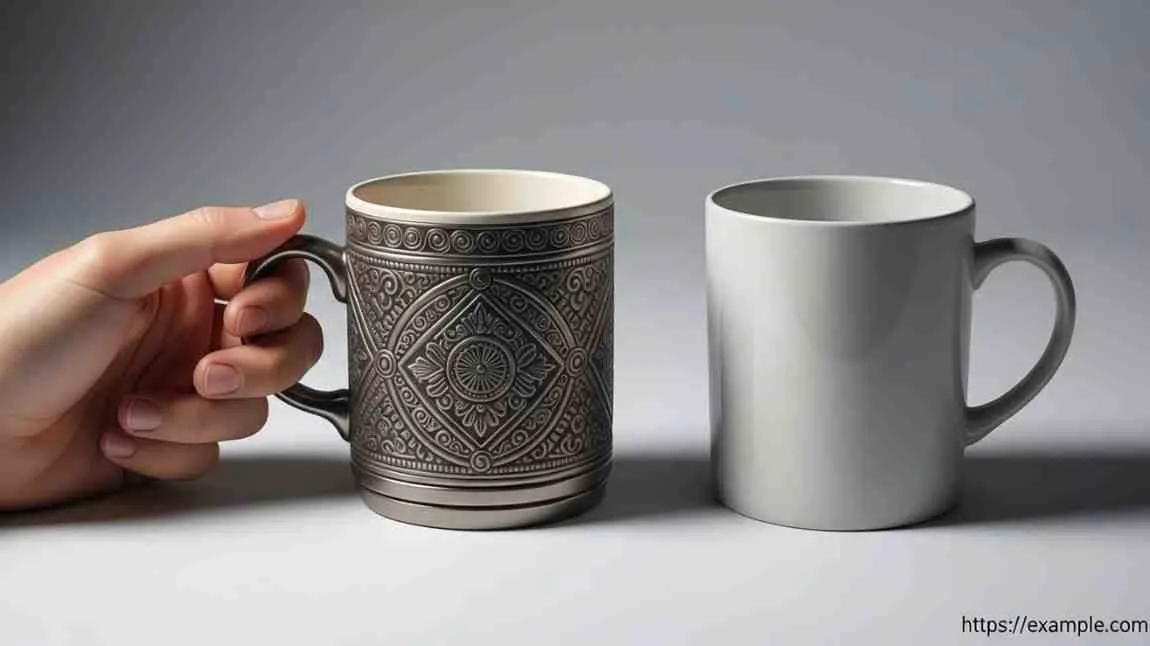
Reading Labels and Markings
The most reliable method for determining an item’s safety is checking for explicit labeling:
Look for Warnings: Turn items over and examine the bottom for stamps, stickers, or printed warnings including:
- “Not for Food Purpose For Decorative Use Only”
- “Decorative Use Only”
- “Not for Food Contact”
- “For Decorative Purposes”
- “Display Only”
These clear warnings should be taken seriously—they exist for your protection.
Food-Safe Certifications: Items safe for food contact may display markings indicating compliance with safety standards:
- “Food Safe” or “Food Grade”
- “Lead-Free” or “Cadmium-Free”
- “FDA Compliant”
- “California Prop 65 Compliant”
- Dishwasher and microwave safe symbols
The absence of a decorative-only warning doesn’t automatically mean an item is safe, but explicit food safety certifications provide reassurance.
Visual Inspection Clues
While not foolproof, certain visual characteristics suggest items may not be food-safe:
Bright, Vibrant Colors: Extremely bright reds, oranges, yellows, and other vivid colors—especially on imported or inexpensive ceramics—may indicate lead or cadmium-containing glazes. Food-safe glazes typically produce somewhat muted colors.
Metallic or Lustrous Finishes: Gold, silver, copper, or other metallic decorative elements often contain heavy metals and aren’t food-safe. These decorative flourishes should raise red flags.
Hand-Painted Details: While some hand-painted ceramics are food-safe, detailed painted designs applied over the glaze (overglazes) may contain lead, particularly on imported or craft items.
Rough or Uneven Glazing: Quality food-safe ceramics have smooth, evenly applied glazes. Rough patches, bubbles, or thin spots in glazing suggest lower-quality production potentially indicating decorative-only status.
Corroded or Deteriorating Surfaces: Crazing (fine cracks in glaze), chips, worn areas, or discoloration indicate glaze breakdown that increases leaching risk, even if the item was originally food-safe.
Source and Price Considerations
The item’s origin and cost provide additional context:
Import Sources: Ceramics from countries with less stringent safety regulations—particularly inexpensive items from certain Asian markets—have higher rates of lead contamination. While not all imports are dangerous, exercise extra caution and verify food safety before use.
Unusually Low Prices: If a decorated ceramic item seems remarkably inexpensive, question whether corners were cut on materials. Food-safe production costs more than decorative alternatives.
Vintage and Antique Items: Beautiful vintage ceramics may contain lead or other substances that were acceptable when manufactured but are now recognized as hazardous. Older items should be assumed decorative-only unless proven otherwise through testing.
Licensed Character Merchandise: Popular character mugs and dinnerware marketed as collectibles often carry decorative-only warnings. Verify carefully before using these items for food or beverages.
Regulatory Standards for Ceramic Food Safety
Understanding the regulations governing ceramic safety helps explain why the decorative use only label exists and what protections consumers have.
U.S. Food and Drug Administration (FDA) Standards
The FDA regulates ceramic foodware through enforceable standards limiting lead and cadmium leaching from food contact surfaces.
FDA Lead Limits: The agency established maximum allowable lead leaching levels measured through standardized testing:
- Flatware (plates): 3.0 parts per million (ppm)
- Small hollowware (cups, mugs under 1.1 liters): 2.0 ppm
- Large hollowware (pitchers, bowls over 1.1 liters): 1.0 ppm
Cadmium Limits: FDA also restricts cadmium leaching:
- Flatware: 0.5 ppm
- Small hollowware: 0.5 ppm
- Large hollowware: 0.25 ppm
Testing Requirements: Manufacturers or importers of ceramic foodware must ensure their products meet these standards before marketing them for food use. Items that cannot meet these limits must be clearly labeled as decorative only.
Enforcement: FDA conducts marketplace surveillance, testing ceramic foodware sold in the U.S. Items exceeding limits may be recalled, and enforcement actions can be taken against violators.
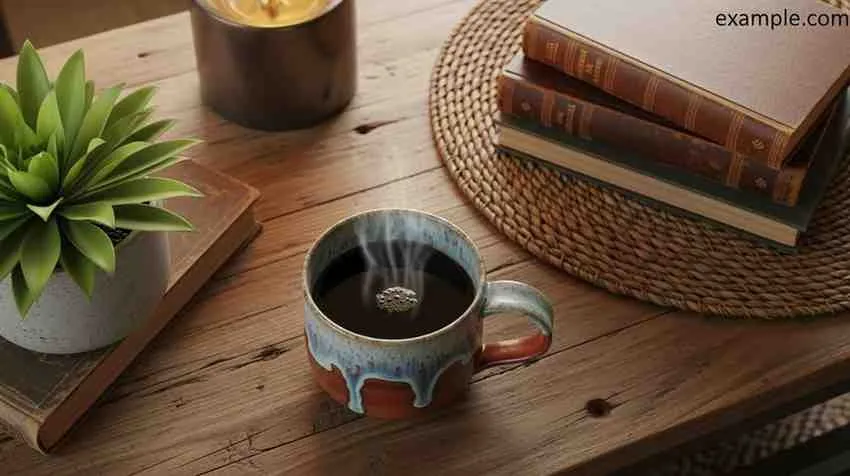
International Standards
European Union: The EU maintains strict limits on lead and cadmium in ceramic food contact materials through Council Directive 84/500/EEC, with maximum release levels similar to or more restrictive than U.S. standards.
California Proposition 65: This California law requires warnings on products containing chemicals known to cause cancer or reproductive harm, including lead and cadmium. Many manufacturers reformulate products or add warnings to comply when selling in California.
Other Countries: Regulations vary globally, with some countries maintaining strict standards similar to the U.S. and EU, while others have less comprehensive requirements. This variation explains why imported ceramics may not meet U.S. food safety standards.
Limitations of Current Regulations
Despite existing regulations, gaps in protection remain:
Decorative Items Exempt: Items clearly marked as decorative only aren’t subject to food safety testing requirements. Responsibility falls on consumers to heed warnings and not use these items for food.
Limited Enforcement Resources: With millions of ceramic products entering the market, regulatory agencies cannot test everything. Some non-compliant items slip through.
Existing Collections: Regulations don’t apply to items already in homes. Vintage ceramics, inheritances, or items purchased before current standards may pose risks.
International Variations: Items purchased abroad or online from foreign sellers may not meet U.S. standards, and consumers may not receive adequate warnings.
Real-Life Cases: When Decorative Ceramics Caused Harm
Understanding real incidents of lead exposure from decorative ceramics illustrates why these warnings matter.
Children’s Lead Poisoning from Decorative Mugs
In multiple documented cases, children have experienced elevated blood lead levels traced to drinking from decorative ceramic mugs featuring popular cartoon characters. One notable case involved a five-year-old who regularly used a collectible character mug purchased at a theme park. The child’s routine blood test revealed elevated lead levels, prompting investigation.
Environmental testing identified the decorative mug—which bore a small “decorative only” stamp on the bottom that parents hadn’t noticed—as the lead source. Laboratory analysis showed lead levels in beverages consumed from the mug exceeded safe limits by significant margins. The bright red and yellow glazes decorating the character contained high lead concentrations.
After discontinuing use and medical intervention, the child’s blood lead levels gradually decreased, but developmental assessments revealed subtle impacts on learning and behavior attributable to the exposure. This case highlights how innocent-seeming items can cause real harm, particularly to vulnerable children.
Imported Ceramic Recalls
The FDA and Consumer Product Safety Commission (CPSC) have conducted numerous recalls of decorative ceramic items found to exceed lead limits. In one significant recall, thousands of decorative coffee mugs imported from China and sold at major retailers were recalled after testing revealed lead levels hundreds of times above FDA limits.
Many consumers who had already purchased these mugs were unaware of the decorative-only designation and had been using them daily for hot beverages—precisely the use most likely to cause maximum lead leaching. The recall notification prompted blood testing recommendations for regular users, and several cases of elevated blood lead were identified and linked to the mugs.
This incident demonstrated how decorative items can easily be mistaken for food-safe products, especially when sold in kitchenware sections of stores without prominent safety warnings at point of purchase.
Pottery Studio Exposure
An independent pottery artist unknowingly used a decorative glaze containing lead for custom mugs sold at craft fairs. The artist, unfamiliar with food safety regulations for commercial sales, chose the glaze for its beautiful appearance without understanding its lead content or that it was intended only for decorative pieces.
After several customers experienced health concerns and testing revealed dangerous lead levels, health authorities traced the exposure source to the handmade mugs. The incident resulted in a widespread recall, notification to all known purchasers, and legal consequences for the artist. This case emphasizes that even well-intentioned creators may inadvertently produce dangerous items without proper education about ceramic safety.
Corporate Promotional Items
A company distributed commemorative coffee mugs to employees featuring the corporate logo in metallic paint. The mugs carried small decorative-only labels on the bottom, but these went unnoticed by most recipients who assumed items distributed as coffee mugs were safe for coffee consumption.
After months of daily use, one employee mentioned the metallic taste of coffee from the mug to a colleague familiar with ceramic safety. Testing revealed significant lead in the metallic logo paint, leading to company-wide notification and mug collection. Several employees showed elevated blood lead levels, though most returned to normal after discontinuing use.
This case demonstrates how decorative items can enter workplaces and homes without adequate awareness of their limitations.
How to Test Decorative Ceramics for Lead
If you’re uncertain whether a ceramic item is food-safe, testing options can provide definitive answers.
Home Test Kits
Several companies produce lead test kits available at hardware stores and online for 15 to 30 dollars. These kits typically use colorimetric detection—applying a test solution that changes color if lead is present.
How to Use Home Test Kits:
- Choose a test area on the ceramic surface, preferably where food or beverages would contact
- Follow kit instructions for applying test solution
- Wait the specified time period
- Check for color change indicating lead presence
- Test multiple areas, especially different colored glazes
Limitations: Home test kits provide qualitative results (lead present or absent) rather than precise concentration measurements. They may miss lead in glazes covered by lead-free surfaces or produce false negatives if not used correctly. However, they offer affordable preliminary screening, and positive results should be taken seriously.
Professional Laboratory Testing
For definitive results, professional laboratories can analyze ceramics using specialized equipment that precisely measures lead and cadmium concentrations.

XRF (X-Ray Fluorescence) Testing: This non-destructive method uses X-rays to identify and quantify metals present in ceramic glazes. XRF provides immediate results and can scan different areas of an item to identify localized contamination.
Laboratory Leaching Tests: Labs can perform FDA-protocol leaching tests, exposing the ceramic to acidic solution (simulating acidic foods) for specified periods, then analyzing the solution for released lead and cadmium. This method measures what would actually leach into food or beverages during use.
Finding Testing Services: Some local health departments offer ceramic testing services, particularly for items of concern. Private laboratories also provide testing, with costs typically ranging from 50 to 200 dollars depending on the analysis required.
When to Consider Professional Testing:
- Valuable items you wish to continue using safely
- Items used regularly by children or pregnant women
- Uncertainty about vintage or inherited ceramics
- Situation where exposure may have already occurred and you need documentation
Safe Use Guidelines: When and How to Use Decorative Ceramics
If you own decorative-only ceramic items, follow these guidelines to minimize risk while still enjoying their aesthetic value.
Appropriate Uses for Decorative Ceramics
Items labeled decorative only can serve various purposes without health risk:
Display Only: Use these items purely for visual enjoyment—display on shelves, in cabinets, or as part of home décor where they won’t contact food or beverages.
Non-Food Storage: Decorative containers can safely hold non-food items like office supplies, craft materials, jewelry, or bathroom accessories.
Artificial Plants and Flowers: Decorative vases and pots work perfectly for artificial or dried botanicals that don’t require water.
Candle Holders: Many decorative ceramics make attractive candle holders, provided the heat won’t damage them.
Seasonal Decoration: Holiday-themed decorative ceramics add festive touches to seasonal displays without requiring food contact.
What to Avoid
Never use decorative-only ceramics for:
Hot Beverages: Coffee, tea, hot chocolate, or any heated drinks are particularly problematic because heat accelerates lead leaching and extended contact time increases exposure.
Acidic Foods or Drinks: Juices, wine, coffee, tea, tomato-based foods, and citrus items promote higher leaching rates due to their acidity.
Children’s Use: Never allow children to use decorative items for food or drinks. Their developing bodies are most vulnerable to heavy metal toxicity, and they may use items more frequently than adults.
Food Preparation or Serving: Don’t use decorative bowls, plates, or utensils for mixing, preparing, cooking, or serving food.
Long-Term Storage: Even cold, non-acidic items shouldn’t be stored long-term in decorative containers, as extended contact increases potential exposure.
Transitioning Away from Problematic Items
If you discover you’ve been using decorative-only ceramics for food or beverages:
Stop Use Immediately: Discontinue food contact as soon as you identify the decorative-only warning.
Consider Blood Testing: If you or family members (especially children) have used decorative items regularly for extended periods, consult your healthcare provider about blood lead testing.
Proper Disposal: Don’t donate or sell potentially hazardous items to others. Wrap them carefully and dispose of them in regular trash to prevent accidental use by others.
Replace with Certified Items: Invest in certified food-safe replacements from reputable manufacturers with clear food safety labeling.
Tips for Purchasing Food-Safe Ceramics
Protect yourself by making informed purchasing decisions when buying ceramic items.
Questions to Ask Before Purchasing
Is this item explicitly labeled food-safe? Look for positive confirmation of food safety rather than just absence of warnings.
Where was this manufactured? Research the manufacturer’s reputation for safety compliance and the country of origin’s regulatory standards.
What certifications does it carry? Verify any claimed safety certifications with the certifying organizations.
Can the seller provide safety testing documentation? Reputable manufacturers should be able to provide testing results on request.
What is the return policy if safety concerns arise? Understand your options if you later discover safety issues.
Trusted Sources and Brands
Purchase ceramic foodware from:
Established Brands: Major manufacturers of ceramic dinnerware typically maintain rigorous safety standards and testing programs. Brands like Corelle, Fiestaware, and established European manufacturers have strong safety track records.
Reputable Retailers: Purchase from established retailers that vet suppliers and have accountability systems for recalled products.
Certified Artisans: If buying handmade ceramics, verify that the artist understands and follows food safety requirements, uses certified food-safe glazes, and properly fires items to required temperatures.
Direct from Manufacturers: Buying directly from manufacturer websites often provides clearer safety information than third-party sellers.
Red Flags to Watch For
Be cautious when encountering:
- Extremely low prices that seem too good to be true
- Lack of clear manufacturer information or origin labeling
- Unclear or ambiguous safety statements
- Resistance to providing safety documentation
- Items marketed primarily as collectibles but shaped like functional dinnerware
- Unfamiliar sellers on marketplace platforms without established reputations
The Difference Between Decorative and Food-Safe Ceramics
Understanding the fundamental differences between these ceramic types helps explain why the distinction matters.
Manufacturing Processes
Food-Safe Ceramics: Produced with specific manufacturing standards including:
- Use of certified lead-free, cadmium-free glazes
- Proper firing temperatures that fully bond glazes to ceramic bodies
- Quality control testing to verify consistent safety
- Documented sourcing of materials
- Compliance with regulatory standards
Decorative Ceramics: May use:
- Lower-cost materials prioritizing appearance over safety
- Glazes containing heavy metals to achieve desired colors
- Different firing schedules that may not fully bond glazes
- Overglaze decorations applied after firing that aren’t food-safe
- Production methods optimized for appearance and cost rather than safety
Material Composition
Food-Safe Glazes: Formulated specifically to avoid heavy metal leaching, using alternative colorants and stabilizers that won’t transfer to food.
Decorative Glazes: May contain lead compounds (lead oxide, lead carbonate) or cadmium compounds that create brilliant colors but aren’t safe for food contact.
Testing and Certification
Food-Safe Items: Undergo standardized leaching tests measuring heavy metal release under conditions simulating food use, with results documented and retained.
Decorative Items: Typically receive no food safety testing, as manufacturers don’t intend them for food contact and want to avoid testing costs.
Labeling and Marketing
Food-Safe: Often marketed with explicit safety claims, dishwasher and microwave safety symbols, and clear statements about suitability for food use.
Decorative: Explicitly labeled with warnings or marketed primarily as display pieces, collectibles, or decorative objects rather than functional dinnerware.
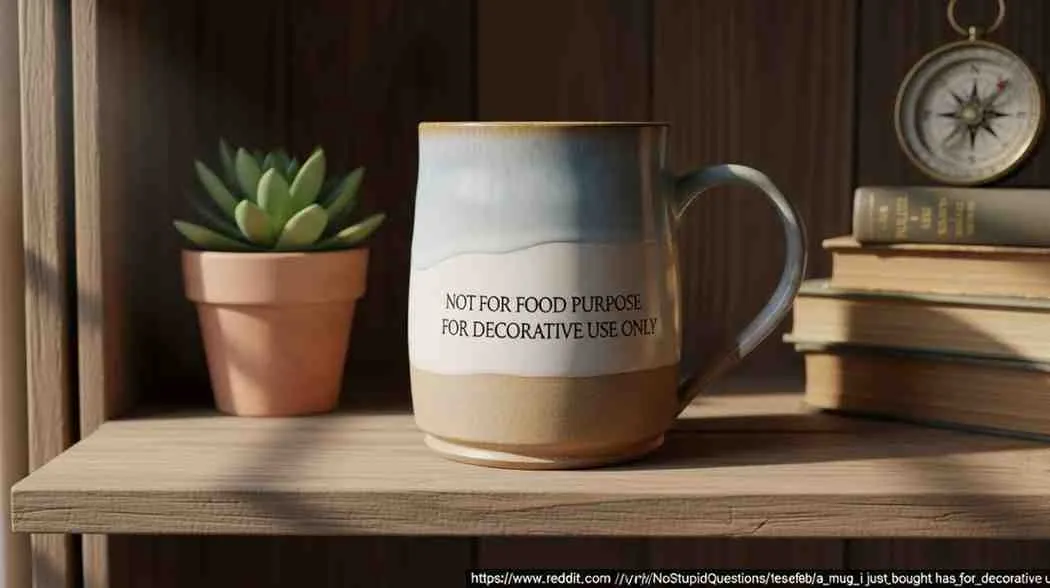
Frequently Asked Questions About Decorative-Only Ceramics
Is It Safe to Drink From a Mug Labeled Decorative Only?
No, you should not drink from mugs or any ceramic items labeled “decorative only” or “not for food purpose.” This warning indicates the item hasn’t met food safety standards and may contain lead, cadmium, or other toxic substances that can leach into beverages, particularly hot or acidic drinks. The health risks from repeated exposure to these toxins—especially for children and pregnant women—far outweigh any convenience or aesthetic appeal. Always respect decorative-only warnings and use these items solely for display purposes.
Can Decorative Ceramic Items Leach Lead or Cadmium?
Yes, decorative ceramics can and often do leach lead, cadmium, and other heavy metals into food and beverages. The glazes on decorative items may contain these toxic substances in concentrations exceeding safe limits. When acidic foods or hot liquids contact these glazes, chemical reactions cause heavy metals to transfer from the ceramic surface into your food or drink. This leaching process continues each time the item is used, creating ongoing exposure. The decorative-only label specifically warns of this risk.
How Can I Test If a Decorative Mug Is Food-Safe?
Several testing options exist. Home lead test kits (available at hardware stores for 15 to 30 dollars) provide quick preliminary screening by applying test solutions that change color if lead is present. For definitive results, professional laboratory testing using XRF analysis or FDA-protocol leaching tests can precisely measure heavy metal content and leaching rates, typically costing 50 to 200 dollars. Some local health departments offer testing services. However, if an item is labeled decorative only, testing is unnecessary—respect the warning and don’t use it for food regardless of test results.
Why Do Some Mugs Say “Not for Food Purpose For Decorative Use Only”?
This warning appears on mugs and other ceramic items that don’t meet food safety standards established by regulatory agencies like the FDA. Manufacturers include this label to indicate the item wasn’t designed or tested for food contact and may contain materials that could leach toxic substances. The warning protects manufacturers from liability if consumers experience health problems from improper use. Items carry this designation because they were produced using decorative glazes, finishes, or manufacturing processes that prioritize appearance over food safety.
When Should You Avoid Using Decorative Ceramics for Beverages?
Always avoid using any ceramic item labeled decorative only for beverages or food. Additionally, be cautious with items lacking clear food-safe certification, particularly those with bright colors, metallic finishes, hand-painted details, or originating from sources with questionable safety standards. Vintage ceramics, collectible character items marketed as display pieces, and extremely inexpensive imports warrant special caution. If you have any doubt about an item’s safety, use it only for display. Never allow children or pregnant women to use questionable items, as they face greatest risk from heavy metal exposure.
Can I Make Decorative-Only Ceramics Safe by Cleaning Them Thoroughly?
No, thorough cleaning cannot make decorative-only ceramics safe for food use. The hazard comes from the chemical composition of the glazes themselves, not from surface contamination that cleaning could remove. Heavy metals like lead and cadmium are integrated into the glaze materials and continuously leach when contacted by food or beverages. No amount of washing, soaking, or sanitizing will change the fundamental chemical properties of non-food-safe glazes. If an item is labeled decorative only, it should remain decorative only regardless of how clean it appears.
Are All Brightly Colored Ceramics Unsafe?
Not all brightly colored ceramics are unsafe, but vivid colors—particularly reds, oranges, and yellows—warrant extra caution because these shades historically required lead or cadmium compounds in glazes. Modern food-safe manufacturers use alternative colorants that can achieve attractive colors without toxic metals, though these food-safe colors may appear slightly less vibrant than decorative glazes. Always verify that brightly colored ceramics explicitly state food-safe status and comply with FDA standards rather than assuming they’re safe based on appearance or seller claims.
Conclusion: Prioritizing Safety With Decorative Ceramics
The phrase “not for food purpose for decorative use only” exists to protect your health and the health of your family. While the beautiful aesthetics of decorative ceramics make them tempting to use for daily coffee, tea, or meals, respecting these warnings is essential for preventing exposure to lead, cadmium, and other toxic substances that can cause serious, sometimes irreversible health problems.
Understanding the critical distinctions between decorative and food-safe ceramics empowers you to make informed decisions about which items belong in your kitchen and which should remain purely ornamental. Remember these key takeaways as you evaluate ceramic items in your home:
Always check the bottom of ceramic items for warnings or food-safe certifications before using them for food or beverages. Take “decorative only” labels seriously—they exist because the item poses potential health risks when used for food contact. Be especially cautious with items featuring bright colors, metallic finishes, hand-painted details, or uncertain origins.
Children and pregnant women face the greatest risk from heavy metal exposure, so never allow vulnerable family members to use decorative ceramics for food or drinks. Even brief or occasional use can contribute to toxic exposure, particularly when hot or acidic beverages accelerate leaching.
When in doubt, choose display over use. Beautiful decorative ceramics can enhance your home’s aesthetic when properly used as display pieces without creating health risks. If you discover you’ve been using decorative items for food contact, stop immediately and consider blood lead testing if use was frequent or prolonged.
The market offers abundant truly food-safe ceramic options that combine beauty with safety. Invest in certified food-safe items from reputable manufacturers for any ceramic dinnerware, mugs, or bowls that will contact food or beverages.
Take Action to Protect Your Family
Inspect the ceramic items in your home today. Turn over mugs, plates, bowls, and serving pieces to check for decorative-only warnings or food-safe certifications. Retire any decorative items currently used for food contact to display-only purposes. Replace them with verified food-safe alternatives from trusted manufacturers.
If you have vintage ceramics, collectible character items, or imported pieces without clear safety documentation, consider having them tested or designate them as decorative only regardless of their original intended use.
Share Your Experience and Help Others
Have you discovered decorative-only warnings on items you were using for food? Have you had ceramic items tested for lead? What strategies do you use to ensure the ceramics in your home are food-safe? Share your experiences, questions, and tips in the comments below to help other readers navigate ceramic safety.
If you found this guide helpful, share it with friends and family who might unknowingly be using decorative ceramics for food contact. Bookmark this article as a reference when shopping for new ceramic items or evaluating pieces already in your home.
Your awareness and action can prevent toxic exposure for yourself and your loved ones. The few minutes needed to check labels and make informed decisions can protect against health consequences that may last a lifetime.
Additional Resources:
- U.S. Food and Drug Administration (FDA): Information on ceramic safety standards and enforcement at fda.gov
- Consumer Product Safety Commission (CPSC): Ceramic product recalls and safety alerts at cpsc.gov
- Centers for Disease Control and Prevention (CDC): Lead exposure information and blood testing recommendations at cdc.gov/lead
- Lead Safe Mama: Consumer advocacy resource testing household items for lead at leadsafemama.com
- Local Health Departments: Contact your local health department for information about ceramic testing services in your area


